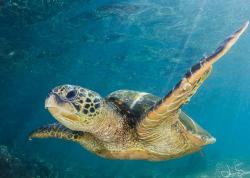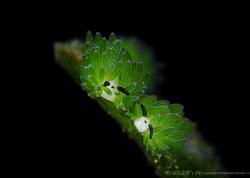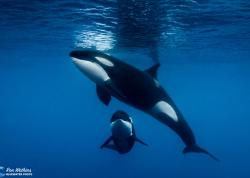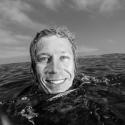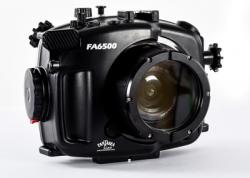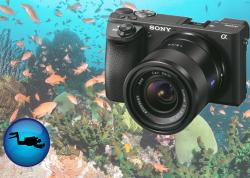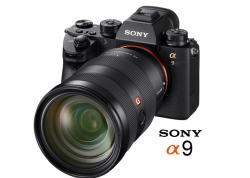Surprise Encounter with Spawning Corals
The dusk peach sky stretched into black as I hopped off the bangka into the warm water of Anilao, Philippines. The water was already dark as I turned in the direction of our dive group, lazily flicking my fins to drift towards the lights. Out of the corner of my eye I noticed a butterflyfish dart by in a fast turn, quickly followed by a second. Was it mating behavior? I turned to investigate.
It was then that I saw a coral 5 feet across jet a viscous cloud puff out into the water, reminiscent of photos of volcano eruptions. Both butterflyfish made a quick pass by the dispersing cloud, which was now drifting past in the gentle current. Another puff erupted from a different area, but this time full of small particles resembling the egg yolk that octopus hatch with. The butterfly fish saw this too, and within seconds were feasting on the nutrient-packed morsels. I was watching coral spawning!
I looked in the direction of the dive group, but they were already deeper down on the reef in search of blue-ringed octopus (which they found that night). This would be my solo photo session, but I had no idea how long it would last and quickly adjusted camera settings and strobe position to start shooting.
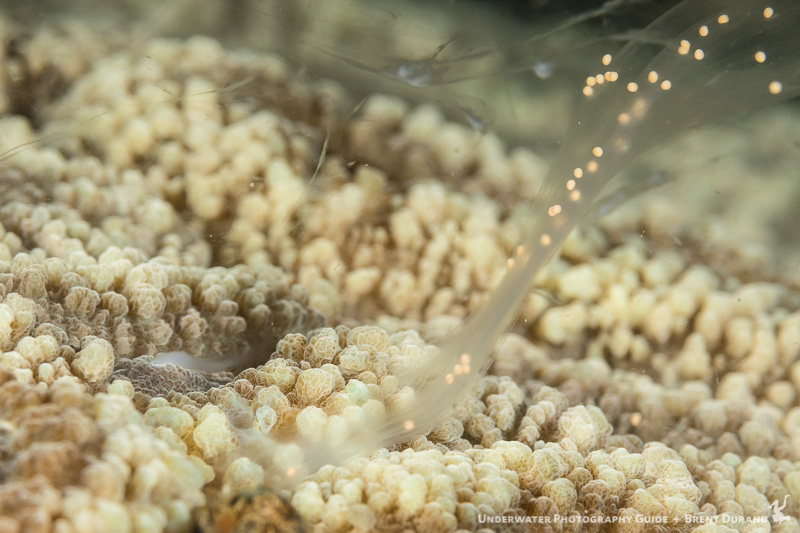
![]() All photos shot with Bluewater Photo's rental Canon 7D Mk 2 in Nauticam Housing.
All photos shot with Bluewater Photo's rental Canon 7D Mk 2 in Nauticam Housing.
Telling a Story
This situation presented a unique opportunity to tell the story of the action in front of me – to go one step past photos of spawning coral to photos of fish feeding on the coral spawn. The difficulties in capturing this shot quickly became apparent, and in the end I didn’t get the shot I was looking for. I take full responsibility for that, but would have had a much better chance at success with different camera gear.
Why mention this? So that we can take a detailed look at how different underwater photo gear would perform in this shooting situation. Once we understand the benefits of different gear configuations, we can really start to customize our gear depending on what we want to shoot.
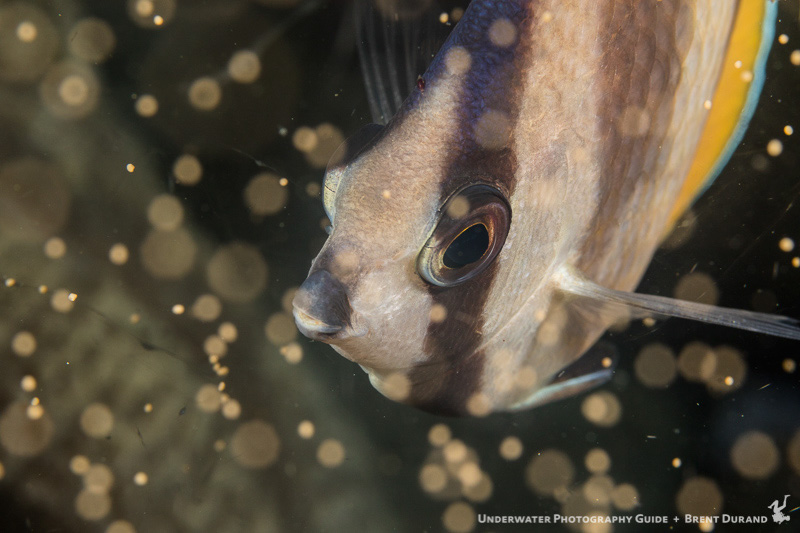
The Right Camera Gear
Camera and Lens
I was diving with Bluewater Photo’s rental Canon 7D Mark II in Nauticam housing, using my Canon 100mm macro lens. This focal distance creates a very narrow field of view, making it very difficult to frame both the coral and the frantically moving fish. I backed up as much as I could, but you still only see narrow sections of reef and pieces of the fish.
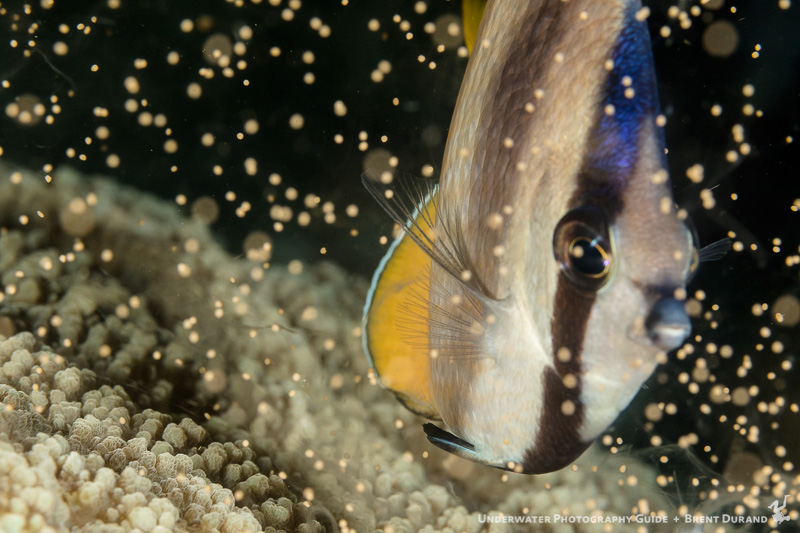
Any camera setup with mid-range field of view would be better for this type of shot. Something between tight macro and super wide-angle: the 60mm on crop DSLR, 100mm on full frame DSLR, wide-angle or kit lens on mirrorless, compact camera without wet lens, etc.
Focusing
My second challenge became apparent after 1-2 shots. The hazy water, unpredictability of the next spawn jet and speed of the fish made it near impossible to see a jet and then move into position and capture the right shot. Sometimes the spawn was no jet at all, but just a thick blanket drifting from the coral. The lens kept hunting back and forth through the milky water full of eggs. And since each moment of action with the fish only lasted a few seconds, I missed many jets due to focus hunting.
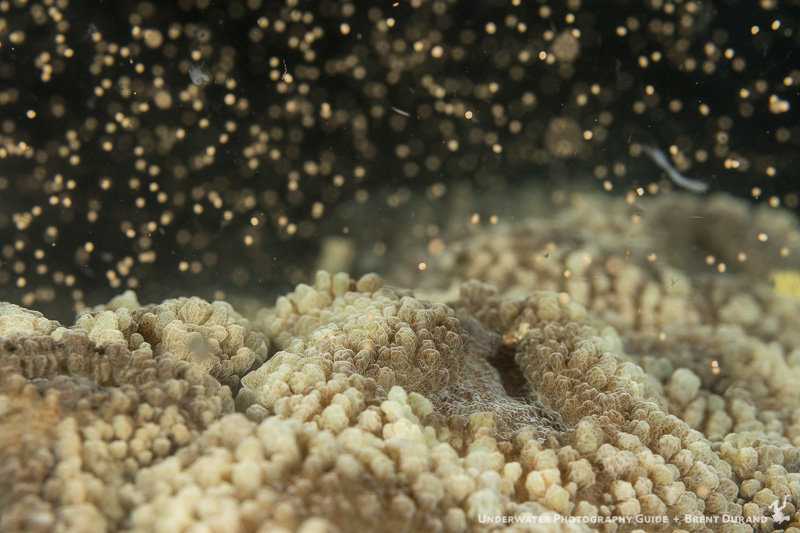
I resorted to trying to guess where the coral would spawn next and pre-focus on the coral, knowing that the fish would be in the same plane of focus if everything worked out. This technique delivered most of the shots in this article.
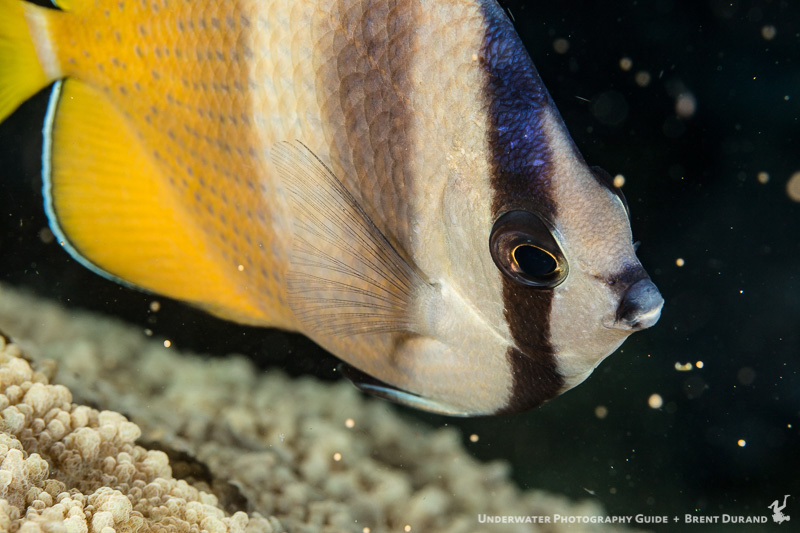
Another alternative would have been to switch to manual focus (depending on camera), or to switch the Canon to back-button focus and pre-focus. This would take AF out of the picture by allowing the camera shutter to drop as soon as I pushed the trigger.
Strobe Recycle Time
The woes of a pop-up flash without a TTL converter! My old Aquatica 5D Mk3 housing used sync cords, so the only thing slowing me down fast-action shooting was recycle time on the YS-D1 strobes (which is very fast). After a minute of shooting with the Canon 7D Mk 2 (with no TTL converter), I was forced to wait up to 6 seconds in between shots – a very frustrating situation to experience during fast action. Ideally I could have fired 2 or 3 frames in fast succession during each jet.
The workaround: use a TTL converter if you can afford one! Sync cords are also great but require more maintenance.
Background on Coral Spawning
Corals are cast spawners, sending eggs and sperm into the dark water column. When fertilization occurs, the new creature develops into a larval planula. The planulae drift in the current, hoping to avoid becoming a meal before settling on a reef to form a new coral colony.
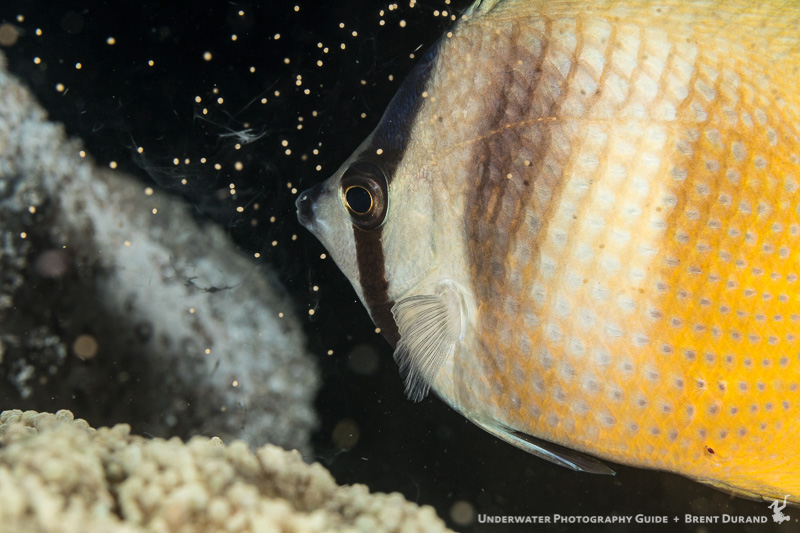
RECOMMENDED ARTICLES
SUPPORT THE UNDERWATER PHOTOGRAPHY GUIDE:
The Best Service & Prices on u/w Photo Gear
 Visit Bluewater Photo & Video for all your underwater photography and video gear. Click, or call the team at (310) 633-5052 for expert advice!
Visit Bluewater Photo & Video for all your underwater photography and video gear. Click, or call the team at (310) 633-5052 for expert advice!
The Best Pricing, Service & Expert Advice to Book your Dive Trips
 Bluewater Travel is your full-service scuba travel agency. Let our expert advisers plan and book your next dive vacation. Run by divers, for divers.
Bluewater Travel is your full-service scuba travel agency. Let our expert advisers plan and book your next dive vacation. Run by divers, for divers.




